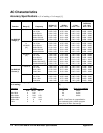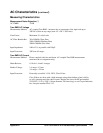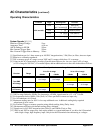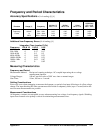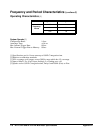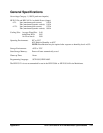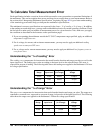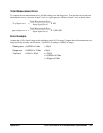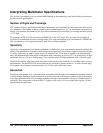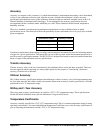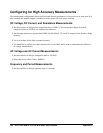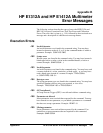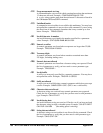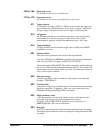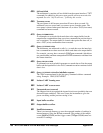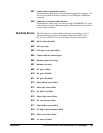
182 HP E1312A and HP E1412A Multimeter Specifications Appendix A
Interpreting Multimeter Specifications
This section is provided to give you a better understanding of the terminology used and will help you interpret
the multimeter’s specifications.
Number of Digits and Overrange
The “number of digits” specification is the most fundamental, and sometimes, the most confusing characteristic
of a multimeter. The number of digits is equal to the maximum number of “9's” the multimeter can measure or
display. This indicates the number of full digits. Most multimeters have the ability to overrange and add a partial
or “½” digit.
For example, the HP E1412A can measure 9.99999Vdc on the 10V range. This represents six full digits of
resolution. The multimeter can also overrange on the 10V range and measure up to a maximum of 12.00000Vdc.
This corresponds to a 6½-digit measurement with 20% overrange capability.
Sensitivity
Sensitivity is the minimum level that the multimeter can detect for a given measurement. Sensitivity defines the
ability of the multimeter to respond to small changes in the input level. For example, suppose you are monitoring
a 1mVdc signal and you want to adjust the level to within
±1mV. To be able to respond to an adjustment this
small, this measurement would require a multimeter with a sensitivity of at least 1
µV. You could use a 6½-digit
multimeter if it has a 1Vdc or smaller range. You could also use a 4½-digit multimeter with a 10mVdc range.
Note that the smallest value that can be measured is different from the sensitivity for ac voltage and ac current
measurements. For the HP E1412A, these functions are specified to measure down to 1% of the selected range.
For example, the multimeter can measure down to 1 mVac on the 100 mVac range.
Resolution
Resolution is the numeric ratio of the maximum measurable value divided by the minimum measurable value on
a selected range. Resolution is often expressed in percent, parts-per-million (ppm), counts, or bits. For example,
a 6½-digit multimeter with 20% overrange capability can make a measurement with up to 1,200,000 counts of
resolution. This corresponds to about 0.0001% (1 ppm) of full scale, or 21 bits including the sign bit. All four
specifications are equivalent.



